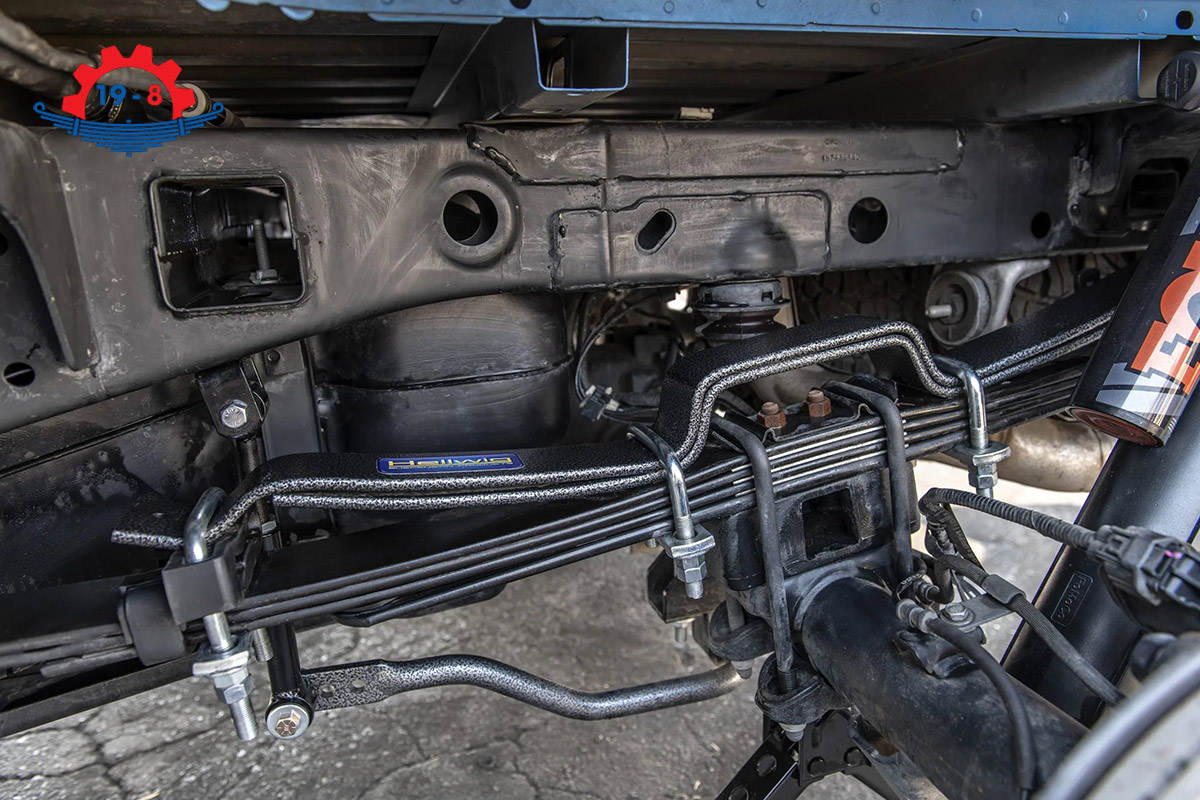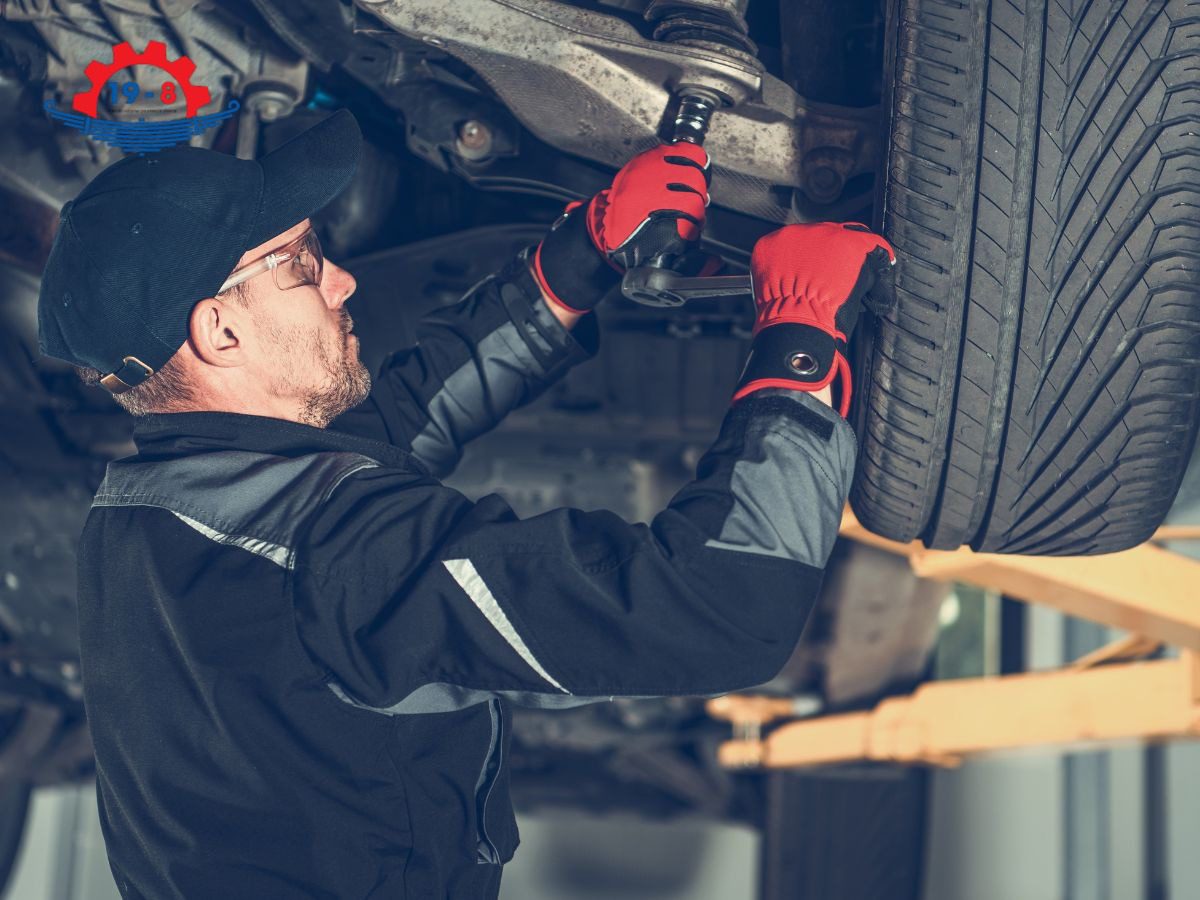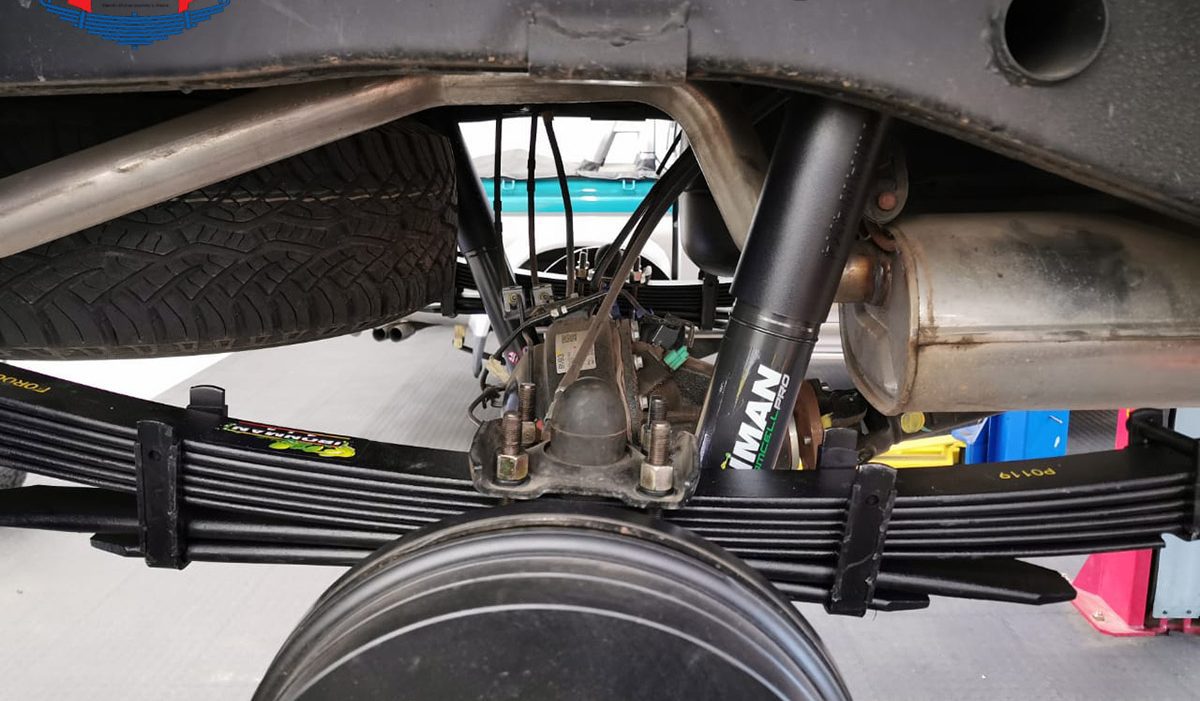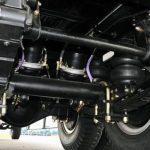Leaf springs are one of the oldest and simplest types of suspension systems, used to support the weight of a vehicle and absorb shocks from the road. They consist of long, flat strips of metal, called leaves, that are attached to the axle and the chassis of the vehicle. Leaf springs can be classified into two main categories: mono-leaf springs and multi-leaf springs. In this article, we will compare and contrast these two types of leaf springs, and help you decide which one is the better choice for your vehicle.


Understanding Mono-Leaf Spring vs Multi-Leaf Spring
A mono-leaf spring, also known as a single-leaf or parabolic spring, is a suspension component designed to absorb shocks and support the vehicle’s weight. Its basic design consists of a single, tapered leaf made of spring steel, forming a slender arc. The leaf is thicker in the center and tapers toward the ends. Mono leaf springs are commonly mounted longitudinally along the vehicle chassis.
In contrast, a multi-leaf spring is a more complex suspension component that incorporates multiple thin leaves stacked on each other. These leaves vary in length and thickness, with the longest leaf typically positioned at the bottom, forming a layered structure. Multi-leaf springs are arranged longitudinally along the vehicle chassis, with the leaves clamped together and attached to the axle.
Understanding the differences between mono-leaf springs and multi-leaf springs is crucial for selecting the most suitable suspension system based on the specific needs and requirements of the vehicle and its intended use.
| Aspect | Mono Leaf Spring | Multi-Leaf Spring |
| Design | Single, continuous leaf | Multiple, stacked leaves |
| Flexibility | Limited flexibility | Increased flexibility |
| Load Capacity | Typically lower load capacity | Generally higher load capacity |
| Ride Comfort | May provide a stiffer ride | Tends to offer a smoother ride |
| Installation | Simpler installation process | More complex installation |
| Cost | Often more cost-effective | Typically higher initial cost |
| Adjustability | Limited adjustability | Greater adjustability for tuning |
| Application | Common in light-duty vehicles | Widely used in various vehicle types |
Pros and Cons of Mono Leaf Spring
Mono leaf springs are a fundamental component in vehicle suspension systems, and understanding their pros and cons is crucial for making informed decisions. Let’s delve into a detailed comparison to grasp the nuances of their advantages and disadvantages.
| Pros | Cons |
| Simple design, easy to manufacture | Limited load-carrying capacity |
| Generally more cost-effective | Less effective in distributing the load |
| Lighter compared to multi-leaf springs | Prone to axle wrap and wheel hop |
| Easier to install due to single-leaf | Limited adjustability and customization |
| Requires less maintenance | Susceptible to sagging over time |
| A smoother ride for lighter loads | Harsher ride quality under heavy loads |
In summary, mono-leaf springs offer simplicity, cost-effectiveness, and ease of installation. However, these advantages are accompanied by limitations in load capacity and customization options. Choosing mono-leaf springs requires careful consideration of specific needs and application requirements, balancing the simplicity and cost-effectiveness with the demands of the intended use.
Pros and Cons of Multi-Leaf Spring
Multi-leaf springs stand out as a versatile option in vehicle suspension systems, offering a range of benefits along with certain considerations. A thorough examination of their pros and cons is crucial for individuals and industries seeking an optimal suspension solution.
| Pros | Cons |
| Higher load-carrying capacity | Complex design, challenging to manufacture |
| Better distribution of weight | Generally heavier than mono-leaf springs |
| Offers more adjustability and customization | Installation can be more complex |
| Reduced susceptibility to axle wrap | May require more frequent maintenance |
| Improved ride quality, especially with loads | Higher cost compared to mono-leaf springs |
| Typically more durable under heavy loads | Potential for noise due to multiple leaves |
In conclusion, the pros and cons of multi-leaf springs underscore their suitability for heavy-duty applications, offering superior load capacity, distribution, and adjustability. However, users must navigate the complexities and potential costs associated with their design, ensuring a balanced decision based on specific application requirements and budget considerations.


Factors to Consider When Choosing Between Mono-Leaf Springs and Multi-Leaf Springs
Now that we’ve explored the characteristics and advantages/disadvantages of both mono-leaf and multi-leaf springs, let’s take a closer look at the factors you should consider when deciding between the two.
Vehicle Type and Usage
The type of vehicle you own and its intended usage is a crucial factor in determining whether mono-leaf or multi-leaf springs are the better choices. For example, if you have a light-duty truck that you use for daily commuting and occasional light hauling, mono-leaf springs would be a suitable option. On the other hand, if you have a heavy-duty truck that frequently carries heavy loads, multi-leaf springs would be a better choice.
Load Requirements
As mentioned earlier, multi-leaf springs have a higher load-carrying capacity than mono-leaf springs. Therefore, if your vehicle regularly carries heavy loads or is used for towing, multi-leaf springs would be the ideal choice. However, if your vehicle’s load requirements are minimal, mono-leaf springs would suffice.
Ride Quality
The ride quality of a vehicle is a crucial factor for many drivers. If you prioritize a smooth and comfortable ride, especially on rough terrain, then mono-leaf springs would be the better option. However, if you’re willing to sacrifice some comfort for increased load-carrying capacity and handling, multi-leaf springs would be a suitable choice.
Budget
Budget is always a significant consideration when making any vehicle-related decision. Mono-leaf springs are generally more cost-effective compared to multi-leaf springs due to their simpler design and construction. Therefore, if you’re on a tight budget, mono-leaf springs would be the more practical choice.
Terrain and Driving Conditions
The type of terrain and driving conditions your vehicle will encounter also play a role in determining the best leaf spring option. If you frequently drive on rough or uneven terrain, mono-leaf springs would provide better articulation and flexibility. On the other hand, if you primarily drive on highways or well-maintained roads, multi-leaf springs would offer better handling and stability.


Choosing between mono-leaf and multi-leaf springs ultimately depends on your vehicle’s specific needs and usage. Both options have advantages and disadvantages, and it’s essential to consider all factors before deciding. If you’re still unsure, consult with a trusted mechanic or suspension specialist who can guide you toward the best option for your vehicle. Remember, the right leaf springs can make all the difference in your vehicle’s performance, so choose wisely.






